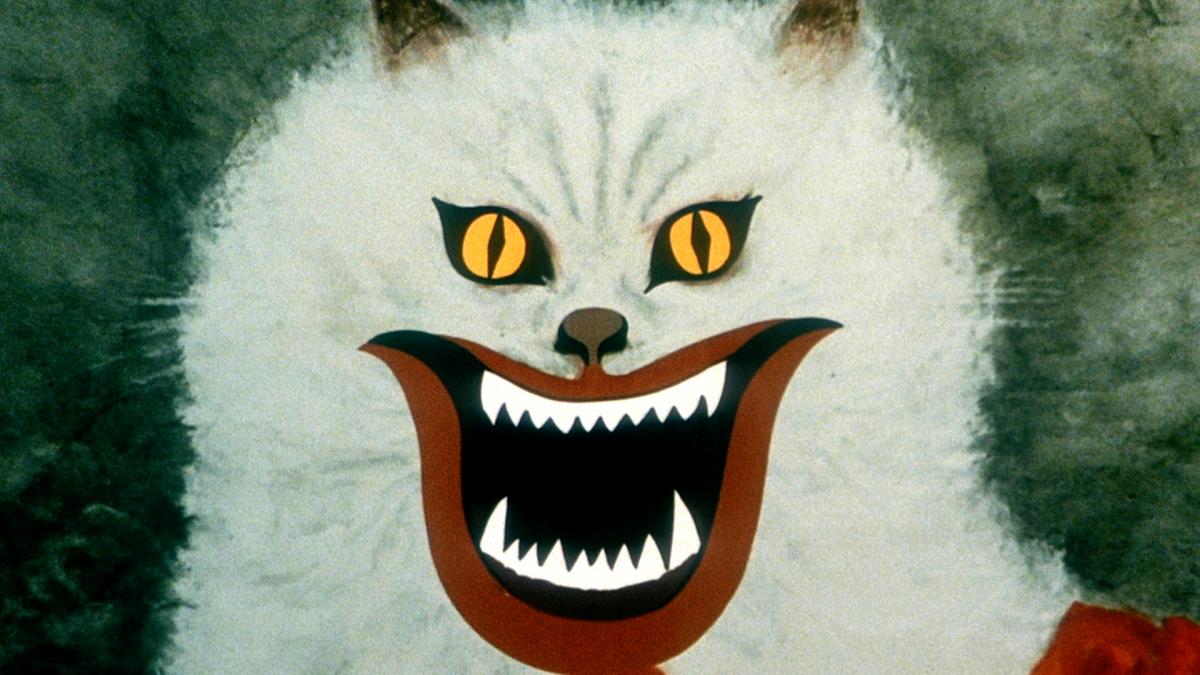After watching this innocently melodic, contortionist fairy-tale-horror-comedy, you will never again wonder what it might feel like to have an intense out-of-body experience. The director, Nobuhiko Obayashi, was part of the youngest generation of people to experience World War II and the atomic bombing of Japan. He made “Hausu” to capture a child’s experience of World War II in Japan. His 1977 debut feature film asks viewers to suspend their adult understanding of the world and accept that for a child, reality is constantly being rewritten and distorted by imagination; what is horrifying is also hysterically funny, what is magical is coincidentally real and, of course, pianos and clocks will eat you if you’re not paying attention.
Although “Hausu” is ostensibly a horror film, its satirically cozy and nostalgic tone, nonsensically abstract scenes and inventive narrative style subvert and dance around genres, making it seem sometimes like a fairy tale, sometimes an adolescent fantasy and sometimes a horror film whose violence and eeriness is ridiculed to satire. Obayashi plays with this genreless style to pay tribute to the self-consuming agony of unfulfilled desire that many Japanese women experienced after World War II.
The film follows Gorgeous (played by Kimiko Ikegami) and her six schoolmates — Fantasy (Kumiko Ohba), Kung Fu (Miki Jinbo), Melody (Eriko Tanaka), Sweet (Masayo Miyako), Professor (Ai Matsubara) and Mac (Mieko Sato) — on a visit to her aunt’s (Yōko Minamida) house for a summer vacation. Except for some odd moments where the house seems to have a hint of sentience, it simply seems to be a quaint countryside cottage. However, as the girls start to mysteriously disappear one by one and watermelons begin to turn into heads, the film transforms — one could even say explodes — into an experimental, hallucinogenic action-drama, prompting the audience to question the significance and hidden symbolism of this terrifying yet beautiful house.
https://en.wikipedia.org/wiki/File:House_(1977)_special_effects_cat.png
Screencap from Nobuhiko Obayashi’s “Hausu” (1977) showcasing its use of special effects. Photo from Wikipedia
To better understand this film, one should be acquainted with the Japanese folklore concept of Tsukumogami, which is when household objects come to life, similar to in “Beauty and the Beast.” One of the ideas behind Tsukumogami is that objects absorb the intimate emotions, both good and bad, of the people living in the house and may become resentful or angry toward intruders, even sacrificing themselves to protect the house. One of the first direct encounters with Tsukumogami in “Hausu” is when Kung Fu is chopping wood and some burning logs fly from the fireplace and begin assaulting her. She immediately jumps into the air, karate-chopping the wood pieces, executing stunts of fantastic impossibility and, at the end of the fight, brushing herself off and continuing on with her day as if nothing has happened. Part of the film is a gradual crescendo of the household objects’ violence, which the house unleashes in an effort to both acquiesce the long-held pain of Gorgeous’ aunt and to attain some recognition of its accumulated years of unacknowledged suffering.
The structure of the film also displays the confusion that many young people must have felt during the war. At points, the linear chronology dissolves into a mid-1950s-esque music video as the objects of the house and rhythm of the shots rock to the beat of the soundtrack. In these moments when the movie loses its film-like character, the audience experiences how post-war trauma can act out of character, manifesting in delusion.
The most mesmerizing moment appears about 55 minutes in, when the frame rate slows and it feels like the movie is buffering as the movement of the characters becomes hazy and trancelike. The girls are in a panic after losing yet another member of the group and Gorgeous appears to be possessed. During this scene, the audience is projected out of the consciousness of the characters and asked to view them as entities in a state of fantastical delirium.
This fantastical delirium symbolizes the consequence of the romantic dispossession experienced by many women when their partners did not return from the war. Imbued in this dispossession is a passionate longing to return to a nostalgic era. It is revealed near the end that the aunt’s fiancé had promised her that he would come back from the war. She suffered with a broken heart for many years awaiting his return after he died fighting. The house embodies her unfulfilled desire and releases it as magical aggression, giving rise to the horror of “Hausu” and the house’s predatory instinct to consume the lives of untainted young girls. There is a point in the film which is so hard to describe it is probably impossible to spoil: In a mind-bending sequence of events, a terrifyingly hungry piano becomes merged with body parts, a fishbowl and random lightning bolts. Pieces come together and everything collapses simultaneously. In the midst of this confusing, funny and impressionistic scene, Obayashi expresses the pent-up anger of feeling betrayed by love and war.
However, the film offers a solution to this trauma and agony by reminding the audience that those who are living can relieve their suffering by remembering the love they shared with those who have died. In one of its last scenes, “Hausu” presents a beautiful soliloquy: “Even after the flesh perishes, one can still live in the hearts of others, together with the feelings one has for them. Therefore the story of love must be told many times so that the spirits of lovers may live forever. Forever. The only thing that never perishes … the only promise is love.”
Despite its overabundance of zaps and zings, “Hausu” ends with an emotional message. Whether you are dreaming, being bombarded by fantastical illusions or trying to retreat to the past, the desire to be loved never diminishes.

